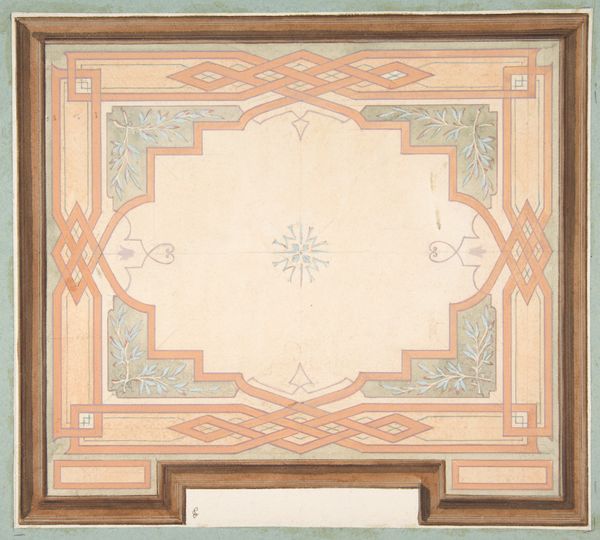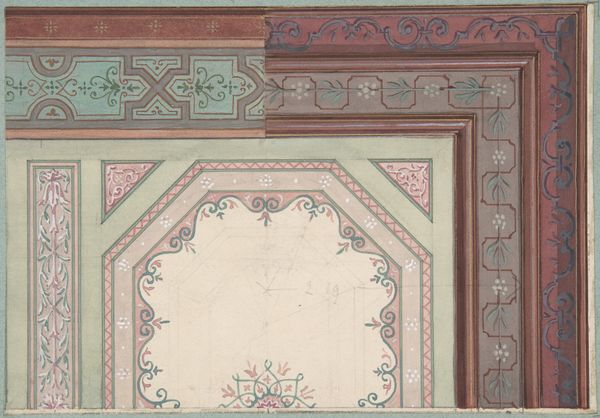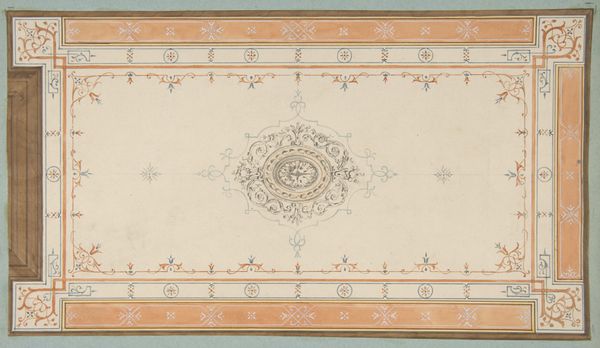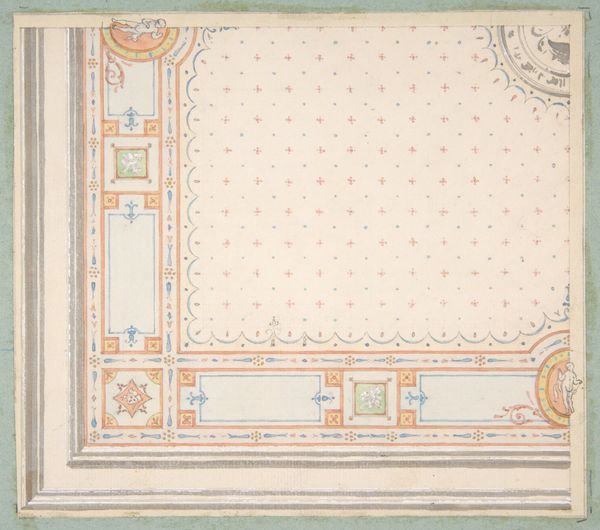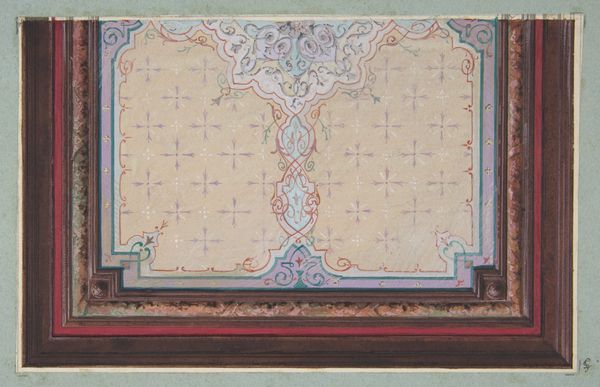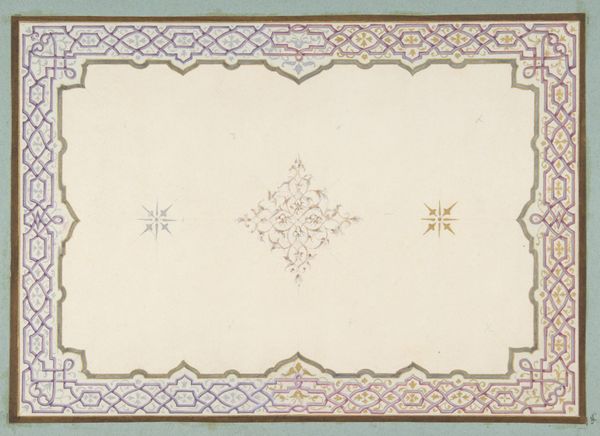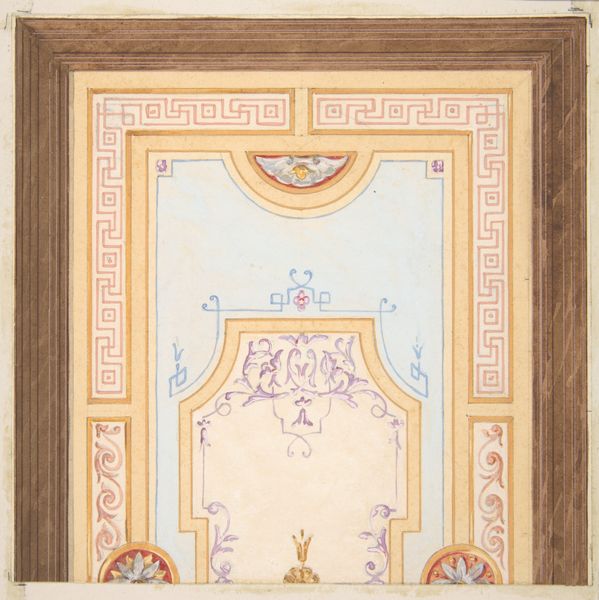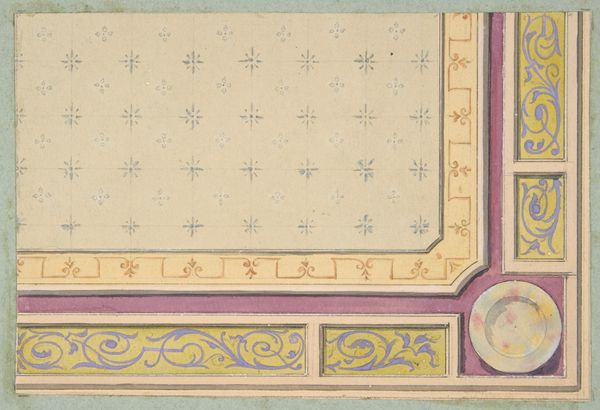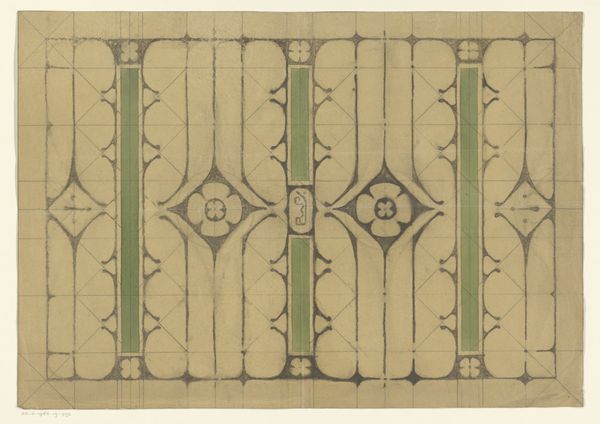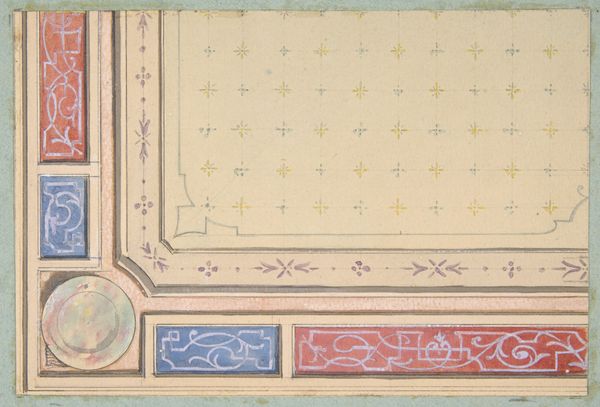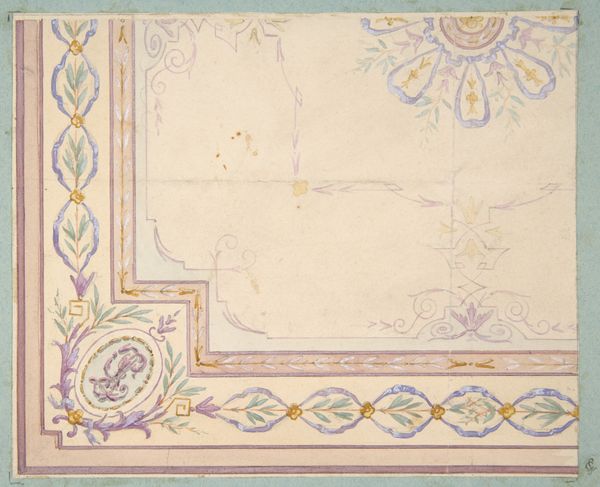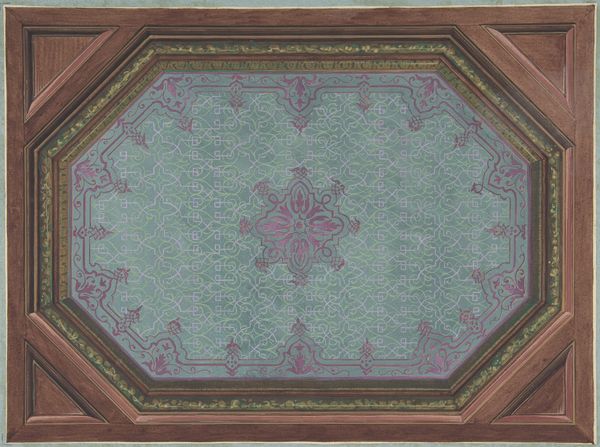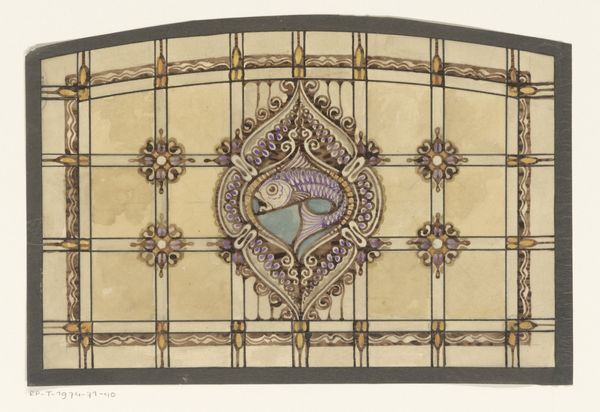
Dimensions: Overall: 10 3/8 x 14 3/4 in. (26.4 x 37.4 cm)
Copyright: Public Domain
Curator: Looking at "Design for a Ceiling," a mixed-media drawing on paper by Jules-Edmond-Charles Lachaise, dating from between 1850 and 1900. What's your immediate impression? Editor: It feels surprisingly… subdued. The muted color palette gives it a neoclassical grace, but there's also a rigidity that almost reads as oppressive in its strict symmetry. It makes me wonder, what spaces were meant to contain this? Curator: Knowing Lachaise, a French-American sculptor who moved from Paris to Boston in the late 19th century, this design reflects the artistic trends influencing academic art and decorative design at that time. Neoclassicism in the service of grandeur. Editor: Precisely! And consider how ceiling design served as a symbol of power. Those refined geometric forms weren't merely ornamental; they signified status, knowledge, and control. Were such rooms meant for the male gaze? How were they shaped by colonial desires and hierarchies? Curator: Good points. We should also observe the composition. Note how each corner contains what seems to be medallions and how there is also a large square section framed at the design's center, giving the space some geometric character. But given its placement in the ceiling above us, how were visitors meant to interpret this while in conversation? Editor: Well, I feel as if that central focal point would emphasize certain social interactions. The entire arrangement feels exclusionary and intimidating to anyone positioned below, it seems, especially with such a careful configuration of geometrical design! How did its presence reinforce and legitimize institutional power? It must be an essential line of enquiry in analyzing it further. Curator: Indeed. It makes one consider what spaces were allowed for women artists within the framework of academic art itself. Editor: The visual vocabulary present gives one some great food for thought indeed! Thank you. Curator: My pleasure. It highlights the lasting, ever-relevant intersections within social structures that we can discover within the art.
Comments
No comments
Be the first to comment and join the conversation on the ultimate creative platform.
